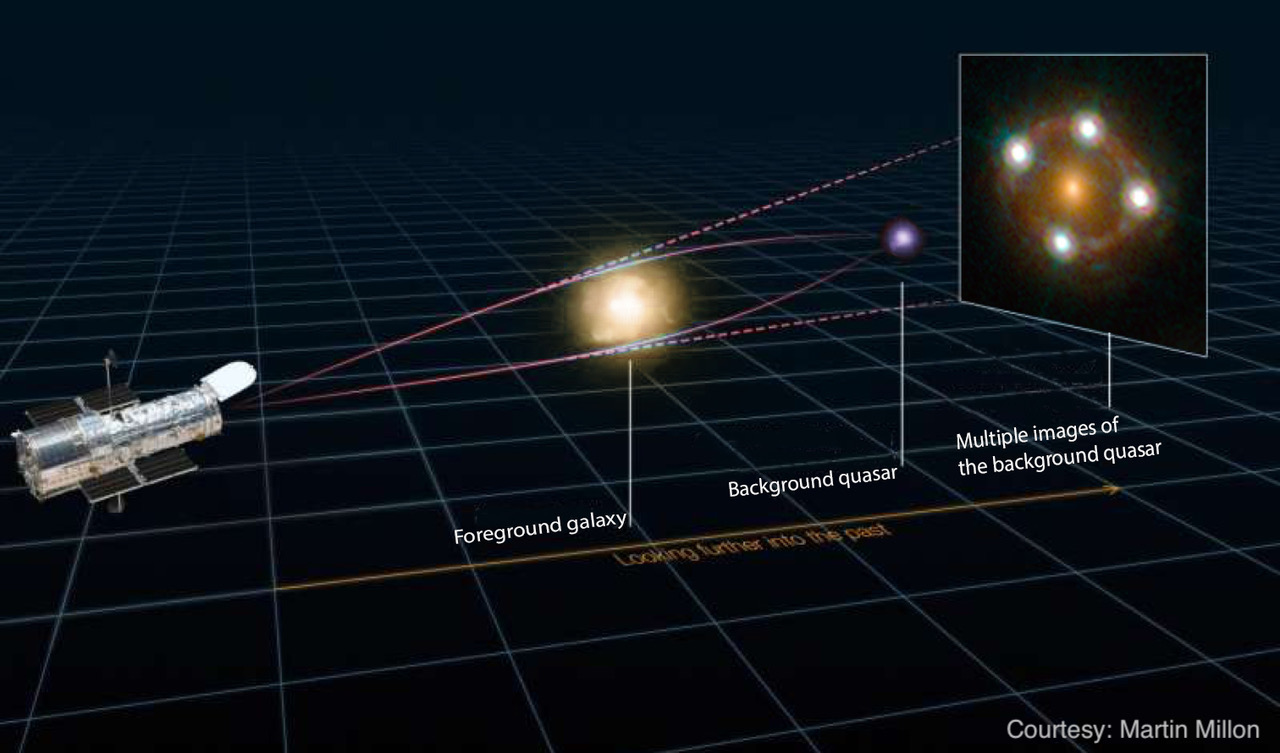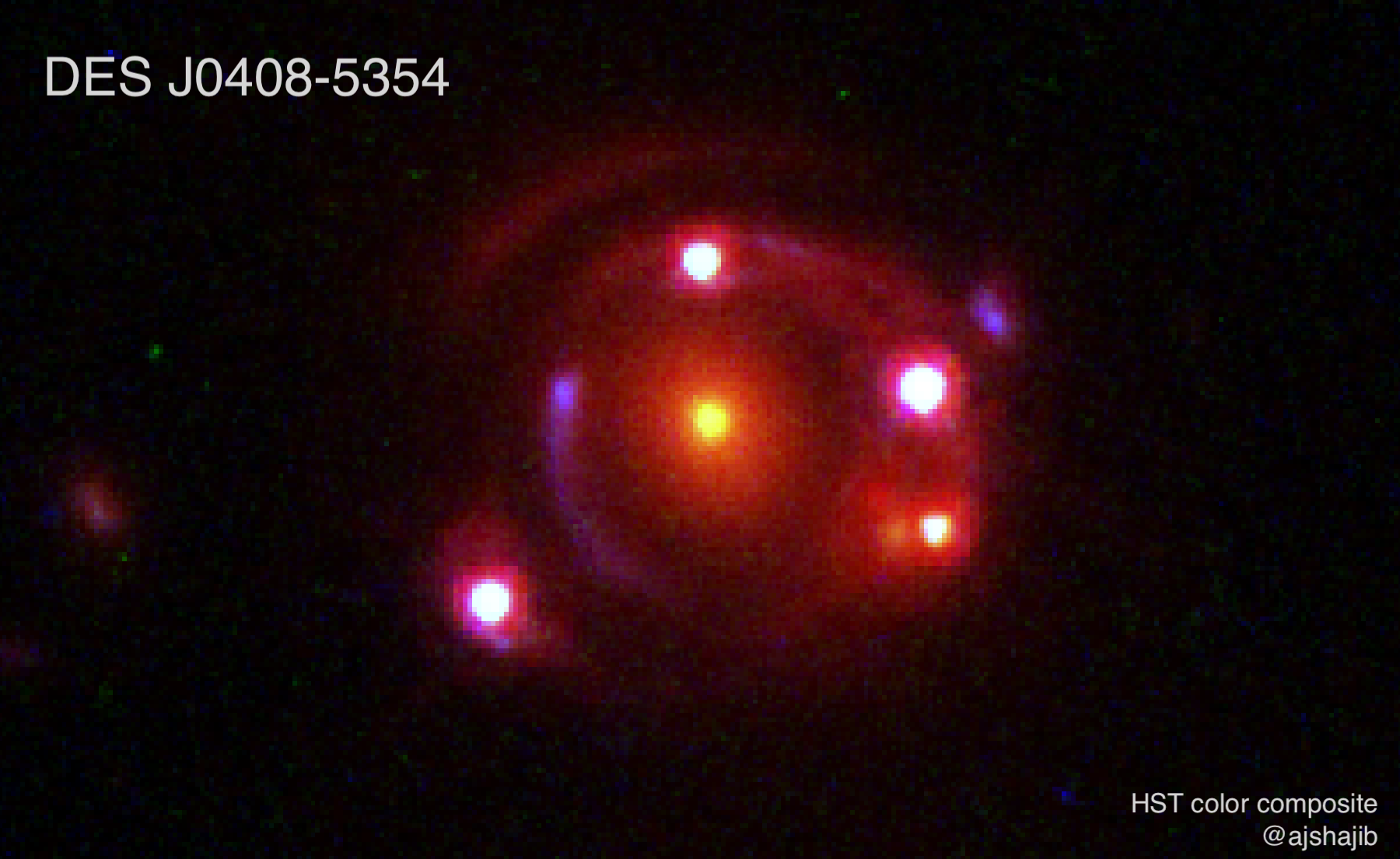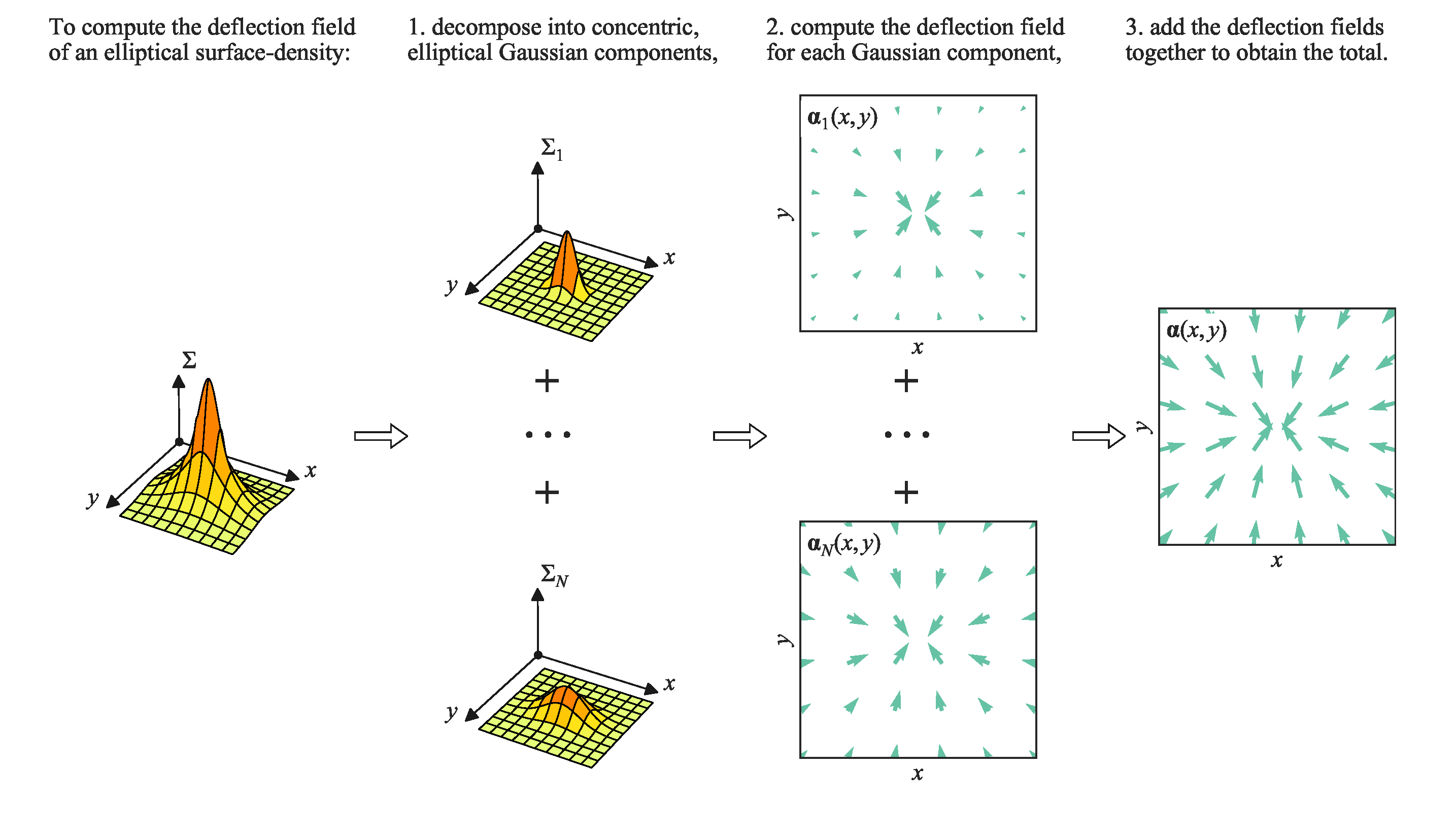
Time-delay cosmography
Strong gravitational lensing is the phenomenon of light from a background object being deflected by the gravitational potential of a massive foreground object to form multiple images of the background object (left picture). If the background object is a quasar, then the delay between the arrival times of photon for different images can be measured using the intrinsic quasar variablity. This time-delay measurement can be used to estimate the so-called "time-delay distance". The time-delay distance constraints cosmological parameters, specially the Hubble constant \(H_0\).

